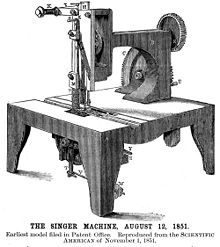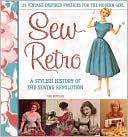By Judi Ketteler
In case you don’t know, sewing is what all the cool girls are doing now. This was most certainly not the case when I was 16, but sewing has made a transformation from dying art to hipster hobby. Today’s fabric is gorgeous, the patterns are fabulous, and the web sites and blogs devoted to sewing are crazy with inspiration and talent.
To see other women (and young girls) embracing this activity I’ve always loved so much thrills me. But as I started to research my book, Sew Retro: 25 Vintage-Inspired Projects for the Modern Girl & A Stylish History of the Sewing Revolution , I realized sewing’s history has been a bumpy one—full of shady characters, narrow and problematic assumptions about women’s roles, and incredible flashes of talent. Let’s just say the needle and thread have been around the block a few times, and been rejected and embraced many times over in the last few centuries.
, I realized sewing’s history has been a bumpy one—full of shady characters, narrow and problematic assumptions about women’s roles, and incredible flashes of talent. Let’s just say the needle and thread have been around the block a few times, and been rejected and embraced many times over in the last few centuries.
A good place to start is the invention of the modern sewing machine by Isaac Singer in the early 1850s. Other inventors had tried, but Singer was the first to make it work. The descriptions I’ve read of Singer characterize him as a bit of a ladies’ man, out for a quick buck and a cheap thrill (I’m guessing people locked up their liquor and their daughters when he came to town). Nonetheless, his engineering know-how made women’s lives so much easier. Of course, is it fair that women were stuck doing all the sewing, as well as taking care of the house and the kids, with no real say in the matter? Of course not. Nineteenth-century domesticity—for all its beautiful artifacts—was no picnic. But at least a sewing machine meant women didn’t have to take every stitch by hand. Commercial sewing patterns were introduced in the 1850s (Butterick produced the first sized patterns in 1863), and by the 1890s, patterns looked similar to how they look today (directions and pattern pieces inside an envelope).


